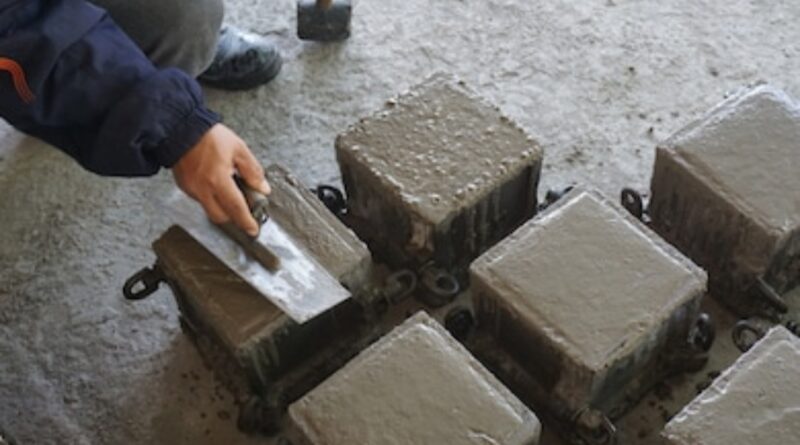How to check Quality of concrete ? Type of test
The following are some of the important tests conducted on concrete:
1.Slump test.
2.Compaction factor test.
3.Crushing strength test.
Slump Test:
This test is conducted to determine the work ability of concrete. It needs a slump cone for test . Slump cone is a vessel in the shape of a frustum of a cone with diameter at bottom 200 mm and 50 mm at top and 300 mm high. This cone is kept over a impervious platform and is filled with concrete in four layers.
Each layer is tamped with a 16 mm pointed rod for 25 times. After filling completely the cone is gently pulled up. The decrease in the height of the concrete is called slump. Higher the slump, more workable is the concrete.
Slump test are the most widely used work ability tests for concrete. The degree of work ability of concrete depends on the values of test results obtained from slump test
Results of Slump Test
- True Slump – True slump is the only slump that can be measured in the test. The measurement is taken between the top of the cone and the top of the concrete after the cone has been removed .
- Zero Slump – Zero slump is the indication of very low water-cement ratio, which results in dry mixes. These type of concrete is generally used for road construction.
- Collapsed Slump – This is an indication that the water-cement ratio is too high, i.e. concrete mix is too wet or it is a high worka bility mix, for which a slump test is not appropriate.
- Shear Slump – The shear slump indicates that the result is incomplete, and concrete to be retested.

- Low work ability: slump value 0-50 mm
- Medium work ability: slump value 50-100 mm
- High work ability: slump value 100-175 mm
| Application | Slump | Compaction .Time |
| Concreting of shallow sections with vibrations | ——– | 0.75 – 0.80 |
| Concreting of light reinforced sections with vibrators | ——— | 0.80 – 0.85 |
| Concreting of lightly reinforced sections without vibrations and heavily reinforced sections with vibrations | 25 – 75 mm | 0.85 – 0.92 |
| Concreting of heavily reinforced sections without vibration | 75 – 125 mm | More than 0.92 |
Compaction Factor Test:
This is another test to identify the work ability of concrete. This
test is conducted in the laboratory. The test equipment consists of two hoppers and a cylinder fixed to a stand, the dimensions and the distances between the three vessels being standardized. Vessel
Apparatus
Compaction factor apparatus consists of trowels, hand scoop (15.2 cm long), a rod of steel or other suitable material (1.6 cm diameter, 61 cm long rounded at one end ) and a balance.
Procedure of Compaction Factor Test on Concrete
- Place the concrete sample gently in the upper hopper to its brim using the hand scoop and level it.
- Cover the cylinder.
- Open the trapdoor at the bottom of the upper hopper so that concrete fall into the lower hopper. Push the concrete sticking on its sides gently with the road.
- Open the trapdoor of the lower hopper and allow the concrete to fall into the cylinder below.
- Cut of the excess of concrete above the top level of cylinder using trowels and level it.
- Clean the outside of the cylinder.
- Weight the cylinder with concrete to the nearest 10 g. This weight is known as the weight of partially compacted concrete (W1).
- Empty the cylinder and then refill it with the same concrete mix in layers approximately 5 cm deep, each layer being heavily rammed to obtain full compaction.
- Level the top surface
- Weigh the cylinder with fully compacted. This weight is known as the weight of fully compacted concrete (W2).
- Find the weight of empty cylinder (W).
Crushing Strength Test:
Metallic moulds of size 150 mm × 150 mm × 150 mm are used for
casting concrete cubes. Before filling mould, it is properly oiled on its inner surfaces, so that cubes can be easily separated. Fresh cube is filled with concrete to be tested in 3 layers and kept in the room.
After 24 hours, cube is removed from the mould and kept under water for curing. After 28 days of curing cubes are tested in the compression testing machine. In this test cubes are placed over the smooth surface which is in contact with side plates of mould. The crushing load is noted and crushing strength is found as load divided by surface area (150 × 150 mm 2).
Code specify the desirable strength of concrete for 3 days and 7 days for quick assessment of strength of concrete

